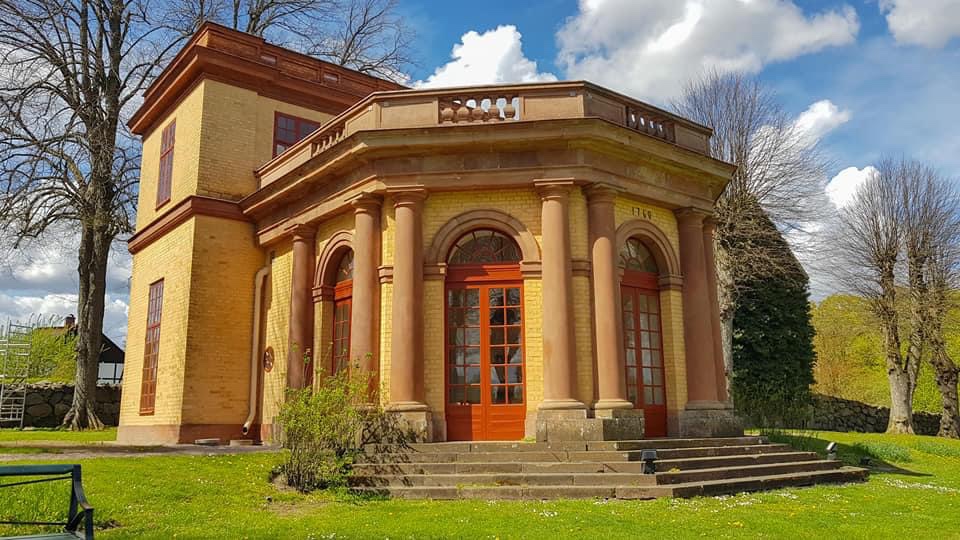Maltesholm Castle: A Historic Renaissance Manor in Sweden
Visitor Information
Google Rating: 4.4
Popularity: Low
Google Maps: View on Google Maps
Official Website: www.maltesholm.se
Country: Sweden
Civilization: Unclassified
Remains: Military
History
Maltesholm Castle is situated in the Kristianstad Municipality of Sweden. The estate traces its origins to the Middle Ages when it was part of the larger Vittskövle estate under the ownership of the Brahe family during the period when Scania was governed by Denmark.
Between 1635 and 1638, Maltesholm Castle took its present form under the direction of Malte Juul, the Danish high constable of Kristianstad. Juul acquired additional land from neighboring properties to expand the estate and gave it his name. At this time, the estate stood as a substantial Renaissance brick manor, reflecting architectural styles favored by King Christian IV.
In the later 17th and 18th centuries, the estate grew further under the Ramel family. Malte Ramel, recognized as one of the wealthiest landowners in the region, added several manors to the holdings. His son Hans Ramel, nicknamed “Bygge-Hans” for his active role in building projects, carried out a significant remodeling of the castle in 1780. This renovation altered the castle’s profile by reducing it by one floor, removing the original crow-stepped gables and spire, and changing the access from a drawbridge to a stone bridge. Hans Ramel also oversaw the construction of the Höge väg, a monumental stone road stretching 1.3 kilometers, which connected to the castle and took nearly half a century to complete. The building effort was rigorous, with workers required to contribute a daily stone to the project.
Ownership of Maltesholm Castle passed in 1800 to Axel Gabriel De la Gardie, governor of Kristianstad County and husband to Christina Gustava Ramel. The De la Gardie family retained the estate for over a hundred years, after which it was inherited by the Palmstierna family in 1933. The Palmstiernas remain its current private owners.
One notable historical visitor was the renowned botanist Carl von Linné (Linnaeus), who toured the estate on May 25, 1749. He recorded observations of the manor’s gardens and agricultural activities, mentioning in particular a diverse beech forest east of the estate. This woodland now enjoys protection as a nature reserve. Nearby, Östra Sönnarslöv Church, dating from the 12th century, houses the Ramel family crypt containing stone sarcophagi that hold Malte Ramel and his wives’ remains, highlighting the church’s longstanding connection to the estate’s former owners.
Remains
Maltesholm Castle today displays clear traces of its Renaissance origins combined with alterations from an 18th-century remodeling. The original manor was built in brick with three floors and featured crow-stepped gables—stepped edges on the roof giving a stair-like appearance—and a staircase tower topped with an ornate spire, all encircled by a wide moat. These elements illustrated the Danish Renaissance architectural style under King Christian IV. Although the original crow-stepped gables and spire were removed in the late 1700s, the moat remains intact, preserving a distinctive feature of the earlier castle design.
The 1780 renovation adapted the exterior into a late 18th-century Swedish classical style, characterized by a smooth plastered facade and a roof with a hipped or valmat shape, where all sides slope gently downward. The castle was lowered by one story, and access was modified by replacing the earlier drawbridge with a solid stone bridge, reflecting changing tastes and functional needs.
One of the estate’s most remarkable features is the Höge väg, a grand stone road measuring about 1.3 kilometers in length and between 12 and 20 meters in width. In some parts, the raised roadway reaches up to six meters high. This large-scale construction project, which took almost 50 years to finish, contributed an imposing and durable approach to the castle grounds.
Surrounding the castle, the park evolved over approximately 370 years. It began as a Renaissance garden divided into flower and utility quarters before transforming into an 18th-century landscape park arranged symmetrically along two main axes projecting from the manor. Within the park stands a classical-style gazebo designed by the architect Carl Hårleman in 1770, adding architectural refinement to the grounds.
Additionally, an orangery built in 1781 remains a noteworthy element of the landscape. This structure sheltered exotic plants, including what Linnaeus recorded as Sweden’s first banana cultivation. The park also features prominent trees such as Sweden’s largest yew and a Douglas fir more than a century old. This fir reaches 35 meters in height and has a trunk circumference of 450 centimeters.
Extending beyond the castle grounds, Östra Sönnarslöv Church retains a direct connection to the estate’s history through the Ramel family crypt. This crypt contains three substantial stone sarcophagi that serve as funerary monuments for Malte Ramel and his two wives, underscoring the family’s lasting presence in the area. The church itself dates back to the 12th century and is decorated with frescoes from the 15th century, further anchoring the estate within a deep historical and cultural context.










